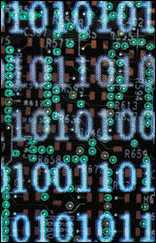
Simplicity Eases Image Retrieval
Hank Hogan
A picture is worth a thousand words, but computerized searches for a digital image involve only a few because they examine only the key words or descriptions attached to an image. A new method that looks at the picture itself, however, may soon change the way images are classified, sorted and retrieved.

A new search method employs soft similarity to compare image files by content, rather than attached key words. The technique could find an application in searchers of medical image databases.
James Z. Wang, an assistant professor of information sciences and technology at Pennsylvania State University, is developing an algorithm that indexes and compares digital image files based on their content. While similar image-retrieval systems have been proposed and developed, Wang's approach offers some improvements. For example, it divides images according to type, such as outdoor scenes, biomedical images or astronomical pictures. Then only the most relevant features and characteristics for each kind of image are used.
The technique employs soft similarity, in which the most similar regions in two images are matched. The program softens the match criteria and widens the comparison to include the entire image. All regions are thus taken into consideration, avoiding problems that arise when images are arbitrarily segmented for evaluation.
Wang and his team have constructed an experimental image-retrieval system, called Simplicity, which runs on a standard server. They have tested the system on a database of about 200,000 general-purpose images and a library of more than 70,000 pathology images.
On the Web
According to Wang, Simplicity is faster and more efficient than existing image-retrieval methods, and it offers higher performance. He said that it could be extended to the estimated billion images on the World Wide Web and that a variation of the technique could be used to filter unwanted material, such as pornograpic images.
For now, the researchers are working with biologists, physicians and other experts to make the system more useful for medical imaging applications.
An online demonstration of Simplicity, which Wang developed while he was a graduate student at Stanford University in Stanford, Calif., is available online at wang.ist.psu.edu.
Published: September 2001